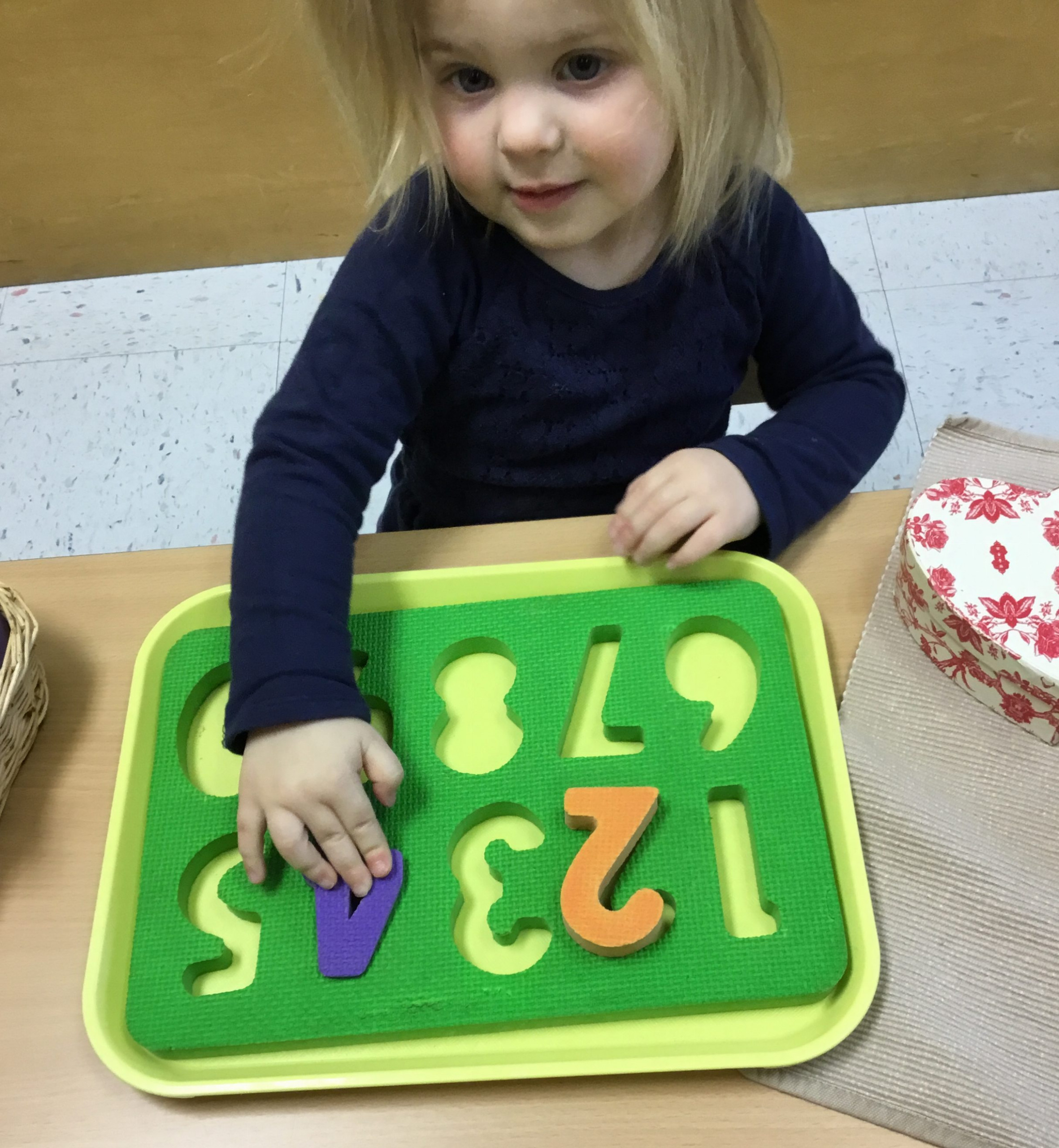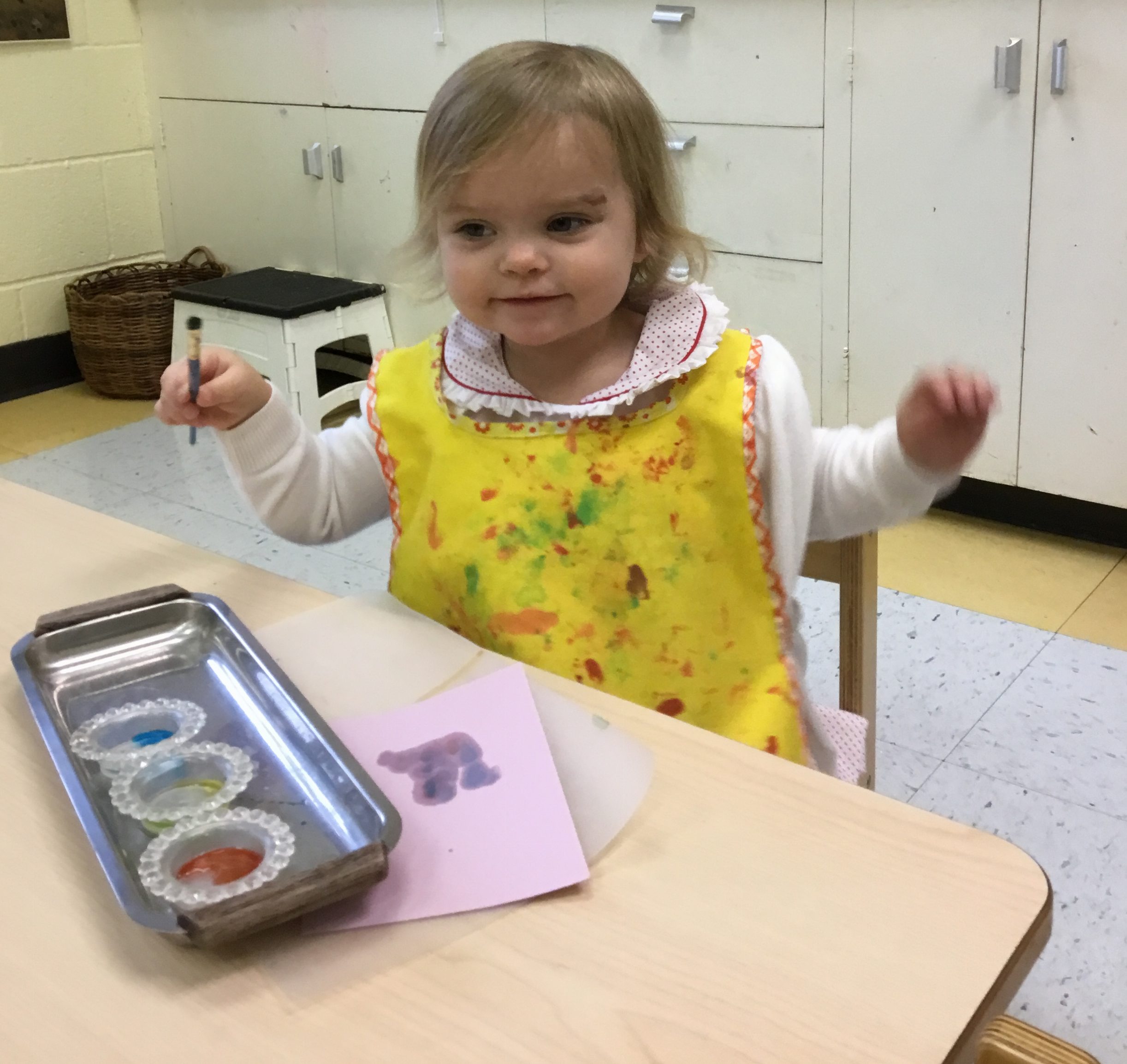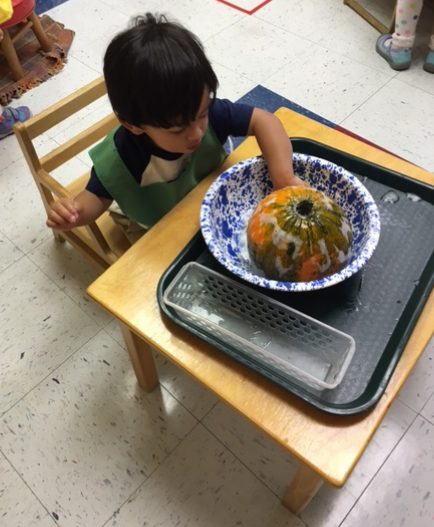This weekend toddler teachers Ms. Renee and Ms. Mari attended an American Montessori Society seminar in Houston. This was a great opportunity to network with other toddler teachers, refresh, and gain new ideas for the classroom.
Maria Montessori wrote that logical consequences generally do not work with toddlers because they don’t yet understand cause and effect. So what do we do to guide young children towards good behavior? Here are a few tips I have tried with my granddaughters.
Tips for Toddlers
1. Give plenty of choices
Make sure there are always age appropriate, interesting activities available so they can channel their energy and challenge their brains in creative ways. If there is nothing constructive to do it is easy for them to find something destructive to do. Children love to do what adults do, so find ways to engage them in cleaning, cooking, and gardening.
2. Set simple limits
If you have too many rules toddler will not be able to remember them. So keep them simple and clear, and repeat them often. As much as possible try to state them positively; saying (and modeling) “use a quiet voice “ is better than “ no yelling”.

3. Control the environment
In a Montessori environment, materials are carefully chosen to provide maximum interest and accessibility to the child. We call this the ‘prepared environment”. As much as possible, remove items from the environment that could lead to a conflict, so that the child is gently guided to good choices rather than being distracted by those things which are not appropriate. I find that making sure my keys and cell phone are safely stowed away limits power struggles.
4. Find other ways to say no
I am always conscious of the many times I am tempted to say “no” in response to a child’s request or behavior. I believe that children hear this word so often that it loses its meaning. It also begins to trigger an automatic response of defiance. By finding other ways to state it, we are able to convey “no” without all the baggage that “no” usually brings. The next time you are about to say “no” try rephrasing it and hopefully you will be amazed by the different response.
Suggestions include:
Saying “Danger” if a child is attempting something dangerous.
“We have to be gentle with our friends (pets, toys, etc).”
“Let’s see if we can find a better way.”
“We are going to do this instead.”

5. Refer to books
Books are wonderful and magical and, for young minds, authoritative. They are a powerful way of illustrating and reinforcing correct behavior to a child in a way that no amount of instruction from parent or teacher can. Stories have been used to teach moral lessons from the beginning of time for one simple reason: it works!
6. Be Patient
The most important thing is to show respect for the mind of the child. What can seem like frustrating behavior on the surface, is simply the child’s attempt to break out of the cage of babyhood and move towards independence. Maria Montessori often spoke of the awe and wonder that adults should have when working with young children. It’s easy to lose that awe if we focus on the negatives rather than the positives. In Montessori we empower children to do daily tasks by themselves.

There is less conflict when we respect their choices and actions. From dressing frames to mopping floors, we’re removing barriers to the child’s independence and saying to them “I trust you to do this!”
The Montessori method gives us the elusive key to understanding and encouraging children through the toddler years. Let’s use it!
If you are looking for more resources check out How to Raise an Amazing Child the Montessori Way by Tim Seldin, President of the Montessori Foundation and Chair of the International Montessori Council.

